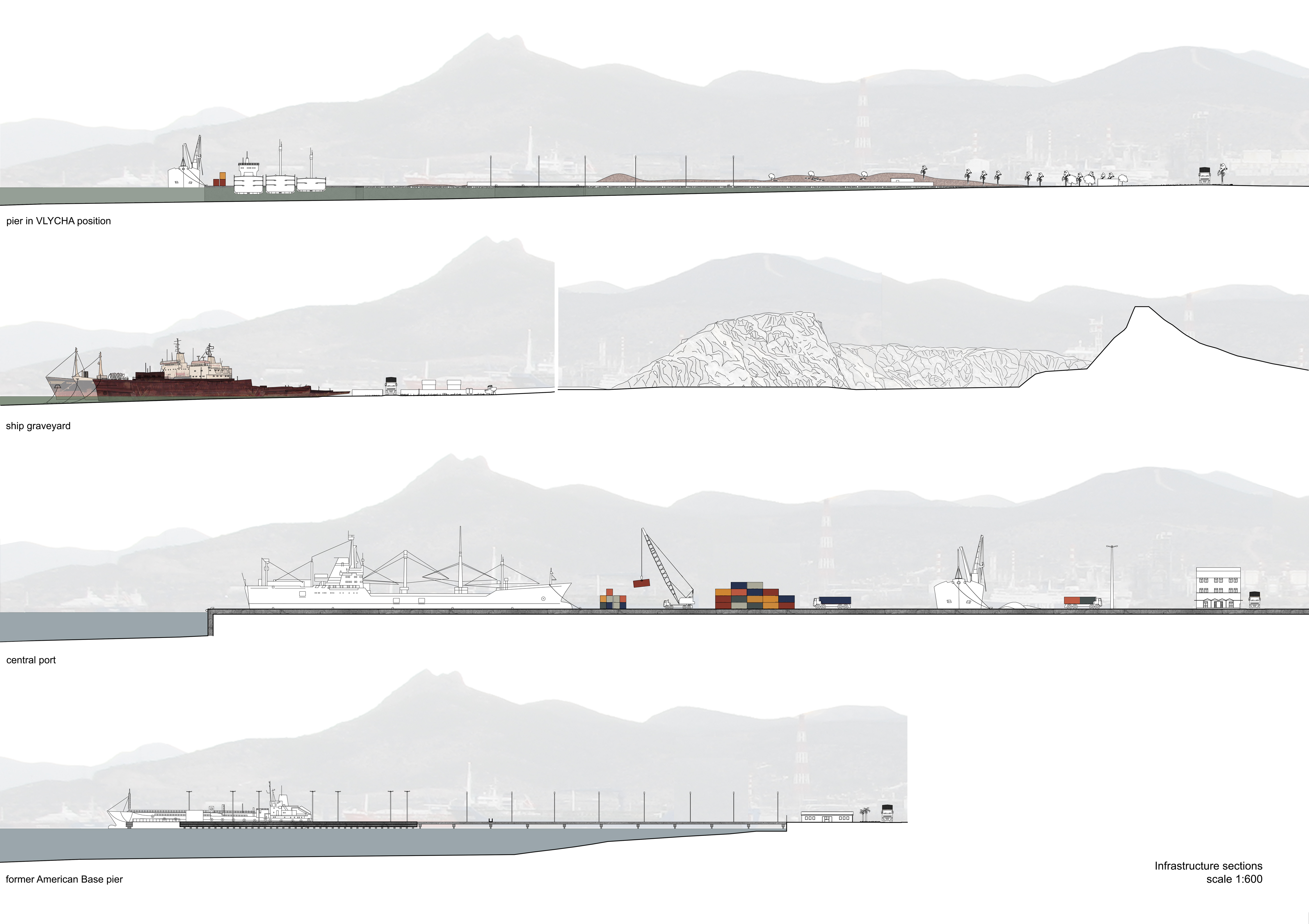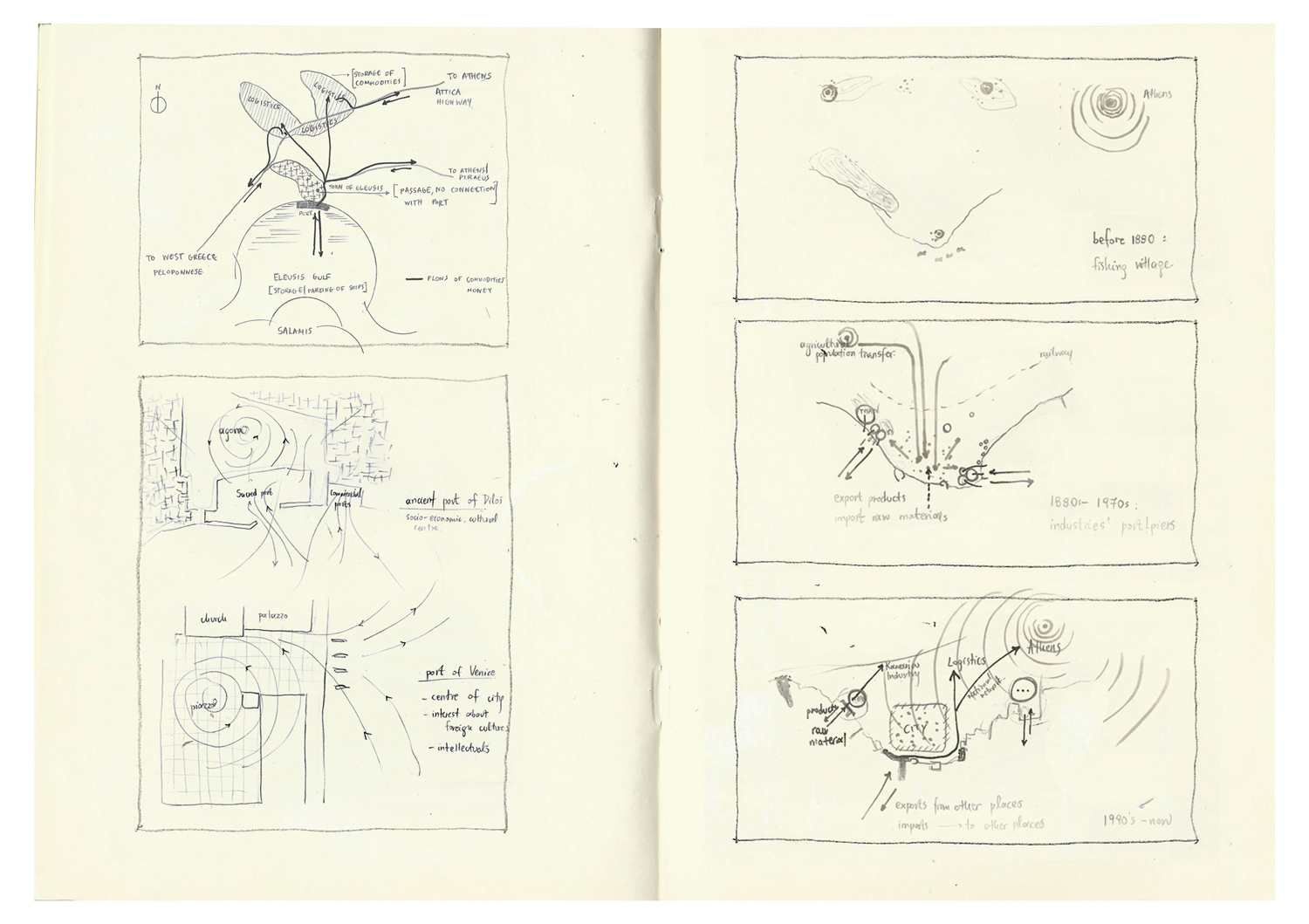–––
Athina Xenouli
Eleusis, located in west Attica, is the intersection point of the homonymous gulf in the north and the Thriasian Plain in the south. Eleusis features a number of territories that coexist, overlap or even collide. The coastline is occupied mainly by industries and freight port infrastructure. The city has little connection to the sea, while expanding on the mainland, among the logistic and manufacturing facilities of the plain. At the same time, the gulf hosts a great number of vessels, both active and inactive. The last century of industrial development in both Eleusis and the gulf has left a huge territorial and ecological imprint; occupation of vast areas in proximity to the sea, heavy infrastructure, pollution, degradation and interventions in the terrain and the coast. Having dozens of industries rendered inert, the ongoing deindustrialization poses questions about the management of all this material and land. The design research explores, among others, those elements that can be components of a sustainable future scenario for both Eleusis and the Gulf.
panorama sea to land: tripinview, 2014
panorama land to sea: Yerolymbos, Hellenic Petroleum, Elefsina, 2015
etching: Clarke, Edward Daniel, Eleusis, 1813

















Stories of Territories
Eleusis, Attica, GR
Athina Xenouli
"Why would not our industrial system behave like an ecosystem, where the wastes of a species may be resource to another species? Why would not the outputs of an industry be the inputs of another, thus reducing use of raw materials, pollution, and saving on waste treatment?"
Frosch, R.A., N.E. Gallopoulos, 1989, "Strategies for manufacturing", Scientific American
The exhaustion of oil deposits, which marks the end of the industrial profile of the gulf deriving from the present, creates three issues; first, the vast oil refinery infrastructure and land, among others, fall at the state of inertia, also ever more vessels and especially oil tankers arrive the Eleusis ship graveyard or the gulf, in order to be sold to the developing countries’ shipbreaking yards some time. Given that half of the country’s oil refineries are situated in the area, its contribution after oil to the whole energy system is minimized. Therefore, there is a huge amount of inert material in the locus [both land and sea], creating the need for management and activating. Collecting and combining these facts, the strategy prescribes a new sustainable industrial eco-system, reclaiming the former industrial land and material as its new territory, reactivating the industrial railway of Eleusis and using the material that constantly arrives at the gulf as its resource. A new green shipbreaking yard is created in the former Eleusis oil refinery location, setting in operation a circular system of relations that provides services to vessels during their whole lifespan and then treating the end-of-life vessels material for exporting it after process, or creating new vessels. The gulf is anticipated to become an important nautical hub for the whole Mediterranean Sea and perform as a spectacle for the city of Eleusis. At the same time, the Aspropyrgos oil refinery is transformed into an algae bio-refinery. An algae marine cultivation platform supplies the bio-refinery and acts as a purifier for the gulf’s water.








